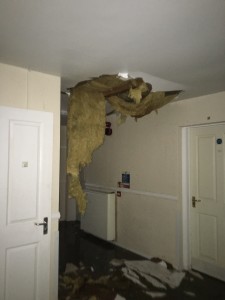
You’d be surprised by the conditions we’ve found properties in over the last couple of years, specifically after lockdowns and long periods of isolation. Both commercial and domestic properties experience significant delays to re-letting to new tenants when properties are left in an undesirable state, so it’s important to understand the potential threats.
What might cause a delay?
- Damage to the property
- Unwanted belongings left behind
- Pets left behind
- Biohazards
- Abandonment
Damage to the property

Damage to rented properties is fairly common – sometimes at the fault of the tenant and other times due to antisocial behaviour or weather. Regardless of the cause or fault, the landlord is required to organise repairs, even if the tenant is required to pay. This cost is often taken out of deposits but the responsibility to organise the work is on the landlord and this can come with setbacks to the time in which properties can be re-let.
Unwanted belongings left behind
We’ve seen various items left behind in rental properties, both large and small, but it’s not as simple as simply removing these items, as landlords often have to attempt to contact the previous tenant to ask how they would like the items to be handled, discarded or returned. Again, this can cause delays to cleaning and clearing the property and scheduling viewings for new tenants.
Pets left behind
Believe it or not, tenants often leave pets behind in rental properties – sometimes in error but often on purpose and this can cause various problems. For larger animals, the landlord would need to contact the RSPCA, Cats Protection League or local animal charities/shelters should they not be able to get in touch with the owner. Smaller animals may also have to be referred here if again the owner does not return for them or if they cannot be fostered in the short-term. This is not only a further setback for the landlord but also extremely traumatising for the animal itself.
Biohazard
Professional biohazard clean ups may be needed before anyone can enter the property to prepare for re-let and it’s important to contact the relevant authorities as soon as this type of service is deemed necessary. It can not only add time delays but also be extremely dangerous if not handled correctly.
 Abandonment
Abandonment
This happens in both residential and commercial properties and puts restrictions in place for re-lets as the previous tenant is still liable to pay rent until the end of their tenancy. If the landlord is unable to contact tenants, they may need to seek other methods of terminating the lease early, without the involvement of the tenant.
Solutions and prevention
- Organise regular property inspections during tenancy – we can provide real time reporting
- Be present on final day of tenancy inspection – our team will conduct an inspection, but you may wish to be there to speak with the tenant
- Ensure you have contact details for tenants and if possible, a forwarding address
- Work with our professional teams, skilled in clean and clear and biohazard clean up
- Ensure when tenants vacate the property that it is secured until a new tenant takes over the lease, as vacant properties can be somewhat more vulnerable than occupied units
If you’re not sure where to start, get in touch and we can provide information on the various services we provide to ensure your property can be re-let in a timely manner.


